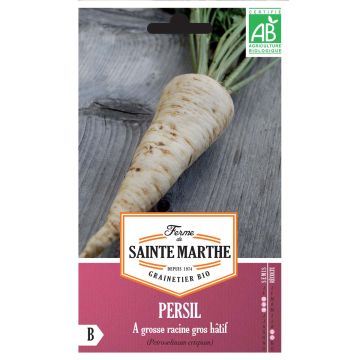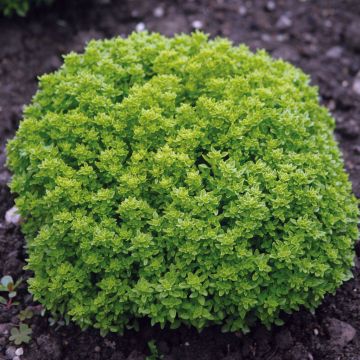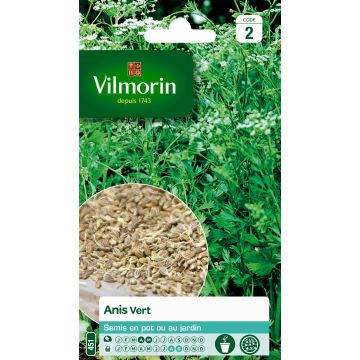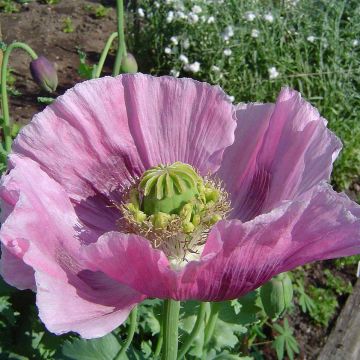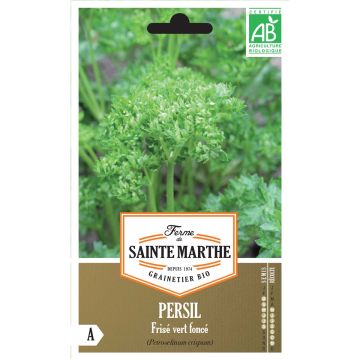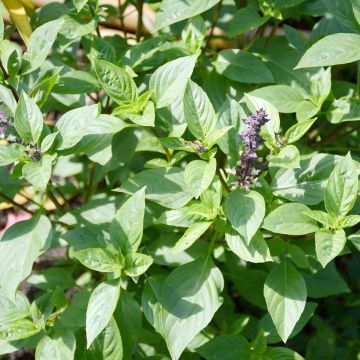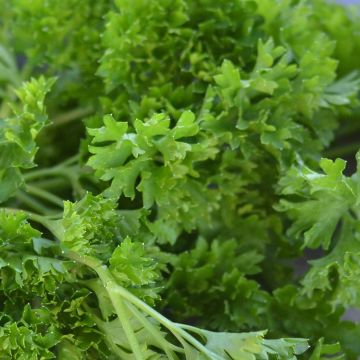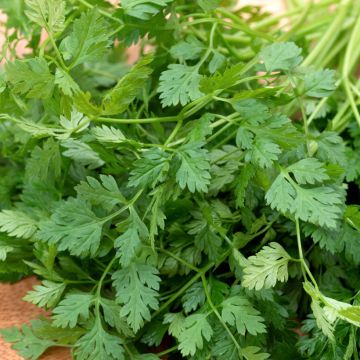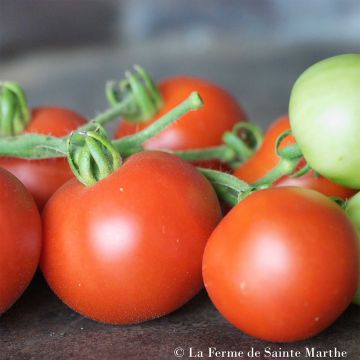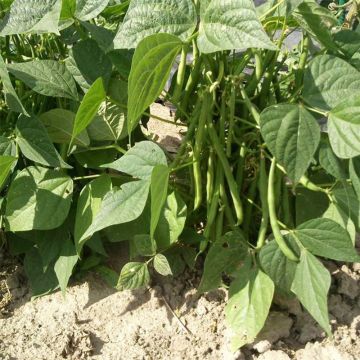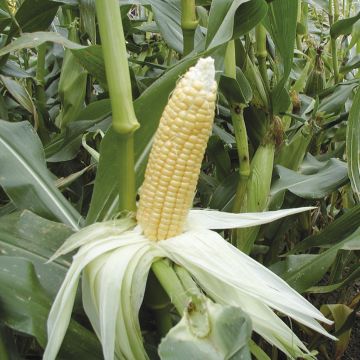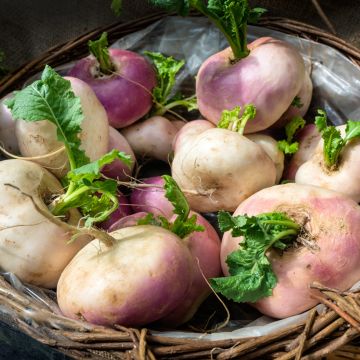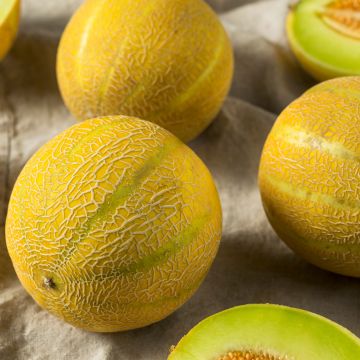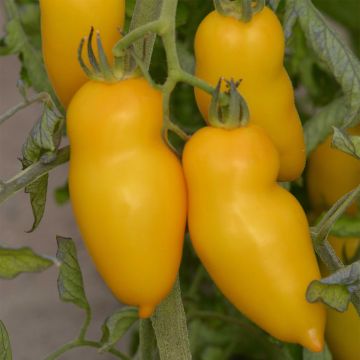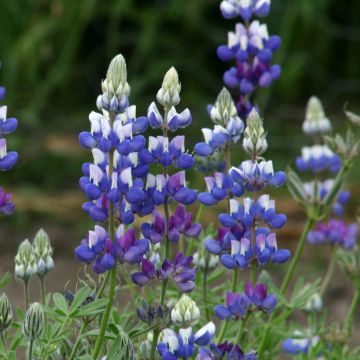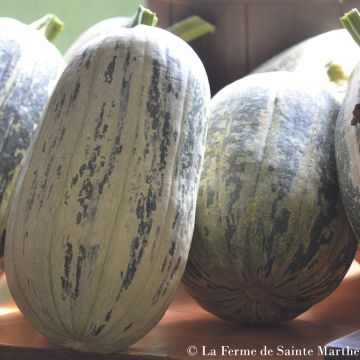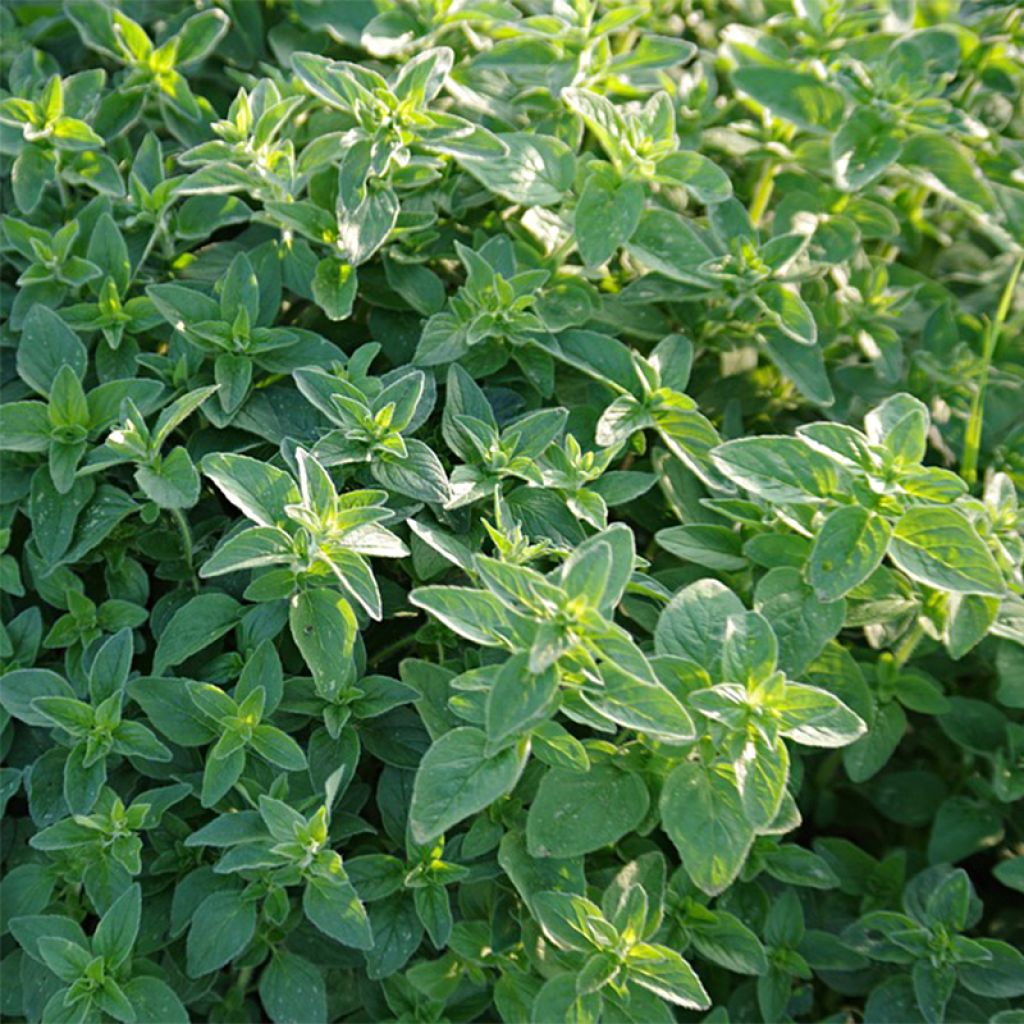

Annual Marjoram - Origanum majorana
Annual Marjoram - Origanum majorana
Origanum majorana
Sweet Marjoram, Knotted Marjoram
I have tried sowing these seeds twice, without success. However, it's not the first time I have grown this plant in my garden. Are the seeds too old?
Catherine, 06/10/2021
This item cannot be shipped to the selected country
Dispatch by letter from €3.90
More information
Schedule delivery date,
and select date in basket
This plant carries a 6 months recovery warranty
More information
We guarantee the quality of our plants for a full growing cycle, and will replace at our expense any plant that fails to recover under normal climatic and planting conditions.
Seed-only orders are dispatched by sealed envelope. The delivery charge for seed-only orders is €3.90.

Description
Annual marjoram or origanum majorana is a very fragrant, aromatic plant. It is easy to grow and its leaves can be harvested as needed from May to November. It is also used as a herbal tea. Sow under cover in March-April or May-June in open ground. Flowering in summer.
Marjoram is a condiment long used for its medicinal properties. It is very aromatic and particularly suitable for dishes with sauce or for marinades and pizzas when dried. The persistence of its foliage makes marjoram a perfect plant for vegetable gardens, borders or containers.
It should be noted that it is sometimes incorrectly called oregano. Although similar, the Garden Marjoram or Shell Marjoram is much less hardy with a different fragrance.
Harvest: You can pick marjoram leaves as needed. Preferably in the morning for the best flavour and aroma.
Storage: This condiment can be stored fresh in a glass of water, or a plastic bag at the bottom of your refrigerator for a week. For longer storage (up to a year), dry the harvested bunch of marjoram upside down in a well-ventilated place. Then store it in tightly closed jars.
Gardener's tip: Marjoram enjoys the company of chervil.
Report an error about the product description
Harvest
Plant habit
Foliage
Botanical data
Origanum
majorana
Lamiacées
Sweet Marjoram, Knotted Marjoram
Cultivar or hybrid
Annual
Other Herb seeds
Planting and care
Sowing marjoram:
Ideally, sow under cover in March and transplant into open ground in mid-May. To sow directly in place (garden or planter), wait until at least mid-May to avoid the risk of late frost. Thin out after germination to 10-15 cm (4-6in).
Position in the sun. The soil should be well-drained, light, and rather dry. Mix in compost and sand if your soil tends to be clayey.
Cultivating marjoram:
Mulch marjoram with stones to retain heat. In pots, remove stagnant water that may accumulate. Weed and harvest regularly to promote the development of new shoots. As soon as flowering begins, cut the plants back by two-thirds to obtain a second harvest.
Marjoram does not tolerate cold. That is why we grow it in our regions as an annual. In autumn, mulch the base to protect it from the cold.
Marjoram has good resistance to diseases. However, if the soil is too wet, the roots will rot. Pest insects are few (aphids and red spider mites) and rare.
Seedlings
Care
Intended location
-
, onOrder confirmed
Reply from on Promesse de fleurs
Vegetable seeds
Haven't found what you were looking for?
Hardiness is the lowest winter temperature a plant can endure without suffering serious damage or even dying. However, hardiness is affected by location (a sheltered area, such as a patio), protection (winter cover) and soil type (hardiness is improved by well-drained soil).

Photo Sharing Terms & Conditions
In order to encourage gardeners to interact and share their experiences, Promesse de fleurs offers various media enabling content to be uploaded onto its Site - in particular via the ‘Photo sharing’ module.
The User agrees to refrain from:
- Posting any content that is illegal, prejudicial, insulting, racist, inciteful to hatred, revisionist, contrary to public decency, that infringes on privacy or on the privacy rights of third parties, in particular the publicity rights of persons and goods, intellectual property rights, or the right to privacy.
- Submitting content on behalf of a third party;
- Impersonate the identity of a third party and/or publish any personal information about a third party;
In general, the User undertakes to refrain from any unethical behaviour.
All Content (in particular text, comments, files, images, photos, videos, creative works, etc.), which may be subject to property or intellectual property rights, image or other private rights, shall remain the property of the User, subject to the limited rights granted by the terms of the licence granted by Promesse de fleurs as stated below. Users are at liberty to publish or not to publish such Content on the Site, notably via the ‘Photo Sharing’ facility, and accept that this Content shall be made public and freely accessible, notably on the Internet.
Users further acknowledge, undertake to have ,and guarantee that they hold all necessary rights and permissions to publish such material on the Site, in particular with regard to the legislation in force pertaining to any privacy, property, intellectual property, image, or contractual rights, or rights of any other nature. By publishing such Content on the Site, Users acknowledge accepting full liability as publishers of the Content within the meaning of the law, and grant Promesse de fleurs, free of charge, an inclusive, worldwide licence for the said Content for the entire duration of its publication, including all reproduction, representation, up/downloading, displaying, performing, transmission, and storage rights.
Users also grant permission for their name to be linked to the Content and accept that this link may not always be made available.
By engaging in posting material, Users consent to their Content becoming automatically accessible on the Internet, in particular on other sites and/or blogs and/or web pages of the Promesse de fleurs site, including in particular social pages and the Promesse de fleurs catalogue.
Users may secure the removal of entrusted content free of charge by issuing a simple request via our contact form.
The flowering period indicated on our website applies to countries and regions located in USDA zone 8 (France, the United Kingdom, Ireland, the Netherlands, etc.)
It will vary according to where you live:
- In zones 9 to 10 (Italy, Spain, Greece, etc.), flowering will occur about 2 to 4 weeks earlier.
- In zones 6 to 7 (Germany, Poland, Slovenia, and lower mountainous regions), flowering will be delayed by 2 to 3 weeks.
- In zone 5 (Central Europe, Scandinavia), blooming will be delayed by 3 to 5 weeks.
In temperate climates, pruning of spring-flowering shrubs (forsythia, spireas, etc.) should be done just after flowering.
Pruning of summer-flowering shrubs (Indian Lilac, Perovskia, etc.) can be done in winter or spring.
In cold regions as well as with frost-sensitive plants, avoid pruning too early when severe frosts may still occur.
The planting period indicated on our website applies to countries and regions located in USDA zone 8 (France, United Kingdom, Ireland, Netherlands).
It will vary according to where you live:
- In Mediterranean zones (Marseille, Madrid, Milan, etc.), autumn and winter are the best planting periods.
- In continental zones (Strasbourg, Munich, Vienna, etc.), delay planting by 2 to 3 weeks in spring and bring it forward by 2 to 4 weeks in autumn.
- In mountainous regions (the Alps, Pyrenees, Carpathians, etc.), it is best to plant in late spring (May-June) or late summer (August-September).
The harvesting period indicated on our website applies to countries and regions in USDA zone 8 (France, England, Ireland, the Netherlands).
In colder areas (Scandinavia, Poland, Austria...) fruit and vegetable harvests are likely to be delayed by 3-4 weeks.
In warmer areas (Italy, Spain, Greece, etc.), harvesting will probably take place earlier, depending on weather conditions.
The sowing periods indicated on our website apply to countries and regions within USDA Zone 8 (France, UK, Ireland, Netherlands).
In colder areas (Scandinavia, Poland, Austria...), delay any outdoor sowing by 3-4 weeks, or sow under glass.
In warmer climes (Italy, Spain, Greece, etc.), bring outdoor sowing forward by a few weeks.


































